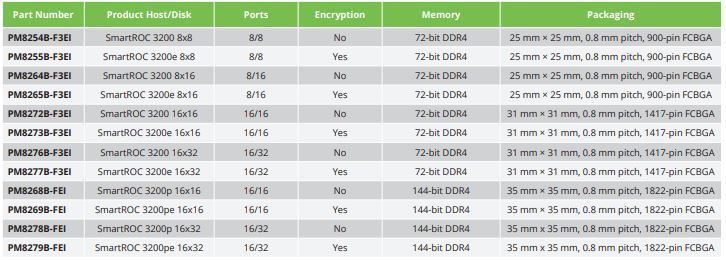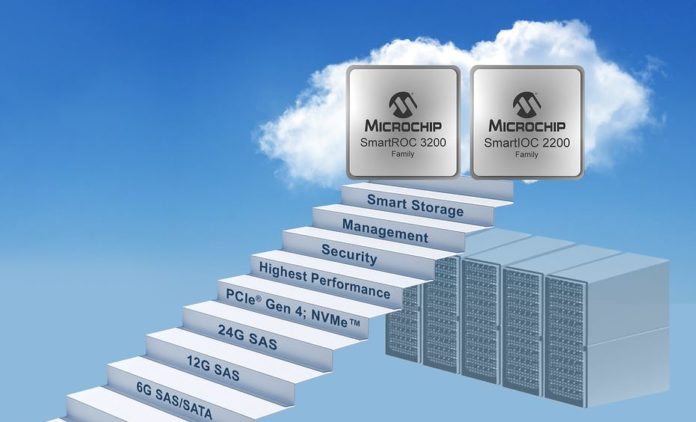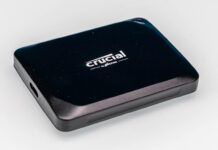Microchip has new PCIe Gen4 Tri-mode controllers on the market. The new SmartIOC 2200 series is a cache-less controller option. For the higher-end Microchip has the SmartROC 3200 series. We should note these are the chips/ controllers, not necessarily the actual boards one will purchase to put into servers. As we move into 2021 and more PCIe Gen4 servers, this is a technology many will be looking for.
Microchip SmartIOC 2200
The Microchip SmartIOC 2200 is effectively what we would consider more of a low-end RAID/ HBA controller. This can handle SATA III, SAS-4, and PCIe Gen4 NVMe with either x8 or x16 lanes to the host CPU and 8-32 lanes for devices.

As a cache-less option, this supports RAID 0, 1, 5, and 10 and is the lower cost option. Still, for those wondering how they can get RAID 1/ 10 for boot drives in VMware and Windows, this is a good example of how one can get some of that functionality with new PCIe Gen4 NVMe SSDs like the Kioxia CD6-L.
Microchip SmartROC 3200
The MicroChip SmartROC 3200 series is the higher-end unit that supports features such as DDR4-3200 memory as cache. Also, with the Microchip Switchtec PCIe switch IP these controllers feature an embedded PCIe switch which helps lower latency for NVMe drives. A concern with NVMe controllers is that adding another bump in the wire means higher latency than NVMe drives directly connected to the CPU.

Like the SmartIOC this also supports SAS-4 which we will start to see roll-out more in 2021. With fast DRAM cache, we get access to higher RAID levels that require cache to maintain performance. Aside from the RAID modes, these chips can also be used as HBAs which is important since that is how many more modern storage stacks such as Ceph expect to have drives exposed. Much of the work over the past several years has been to remove traditional expensive RAID controllers from hardware stacks while HBAs that do not introduce that logic have become more useful. As such, it is important that RAID controllers have HBA modes.
Final Words
With the Intel Ice Lake Xeon‘s final stepping now in production, we are pegging a launch in Q2 although we do not know if those new final stepping chips will be ready for launch. Still with Ice Lake Xeons, Intel will finally join AMD’s 2019 Rome and 2021 Milan architectures, IBM POWER9, and Arm servers such as the Ampere Altra and AWS Graviton2, among others, as PCIe Gen4 servers. That will greatly increase the demand for these parts which is why we are seeing announcements now.





A shame nothing about power-consumption
Would have been interesting to have some power-consumption numbers. Those controller chips often use a lot of power, 10-16W :-(
Compared to a chipset-SATA-controller, even for 8 devices, use perhaps under 0.8 watt (my guess).
That’s why mdadm (Linux software raid) is so advantageous, at least in terms of power-consumption. I know NVMe/PCIe cannot be compared to SATA’s slow 600MB/s…but still.
So please always have focus on power-consumption, our environmental problems has to be taken seriously.